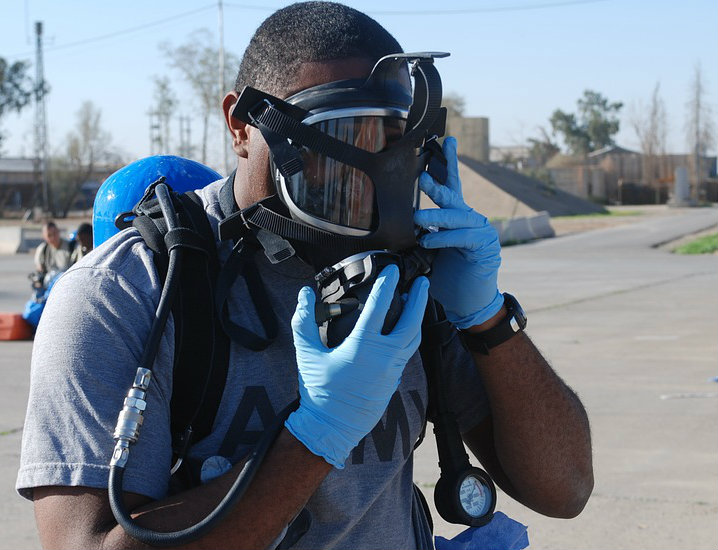Respirators

Respirators can be an effective method of protection against certain hazards when properly selected and worn. However, if a respirator is used improperly or not kept clean, the respirator itself can become a hazard to the worker.
Engineering controls, such as ventilation systems and laboratory hoods, shall be implemented prior to requiring the use of respiratory protection equipment. EH&S will then determine the appropriate respiratory protection equipment based on the remaining respiratory hazards not mitigated by engineering controls.
It is TWU’s policy to limit employee and student exposure to the lowest published exposure limits for each substance. TWU will also minimize employee and student exposure to respiratory hazards as much as is feasible.
Who Can Use Respirators?
Only employees and students who have completed all of the following* are permitted to use respirators:
- Respiratory protection training
- Medical evaluation
- Fit testing (for tight-fitting respirators)
General respiratory protection training, and checkpoints for the medical evaluation and fit testing, are available on TWU's Bridge site. For clinical professionals, similar training and checkpoints are also available on Bridge. Students who are not TWU employees should contact risk@twu.edu to gain access to the training.
Voluntary Use of Respirators
If an employee or student wants to wear a respirator where one is not required:
- Such use must be approved by their supervisor/instructor
- Must complete the medical evaluation*
- Must follow rules about proper cleaning, storage, and maintenance (also applicable to mandatory respirators)
- Must sign a copy of Appendix D (OSHA information for those using respirators when not required)
- No fit test or training is required (but is still recommended)
*Exception: Individuals electing voluntary use of dust masks/filtering facepieces (such as N95s) are not required to complete the medical evaluation, but still must do everything else listed above.
Additional Information
Page last updated 11:35 AM, February 2, 2024